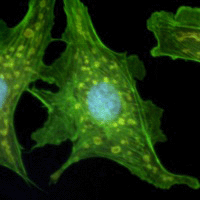Three-dimensional surface recovery from microscopy images using object model-based deconvolution
2004
Master Diploma
Project: 00082

Microscopy imaging often suffers from a small depth-of-focus. Typically, the specimen does not entirely lie in the focal plane and parts of the object that lie outside the focal plane are blurred. The specimen can be optically sectioned by moving the object along the axial axis and different images will contain different areas that are sharp. In this project, we will introduce an object model; i.e., a diffusive and thick (compared to the depth-of-focus) specimen that can be characterized by a surface height map and a surface texture. The goal is to study the feasibility and implementation of an algorithm that recovers both the surface height map and surface texture from a stack of images at different focal distances. The method should incorporate knowledge about the imaging system such as the diffraction-limited point spread function.
- Supervisors
- Dimitri Van De Ville, dimitri.vandeville@epfl.ch, 021 693 51 42, BM 4.140
- Michael Unser, michael.unser@epfl.ch, 021 693 51 75, BM 4.136